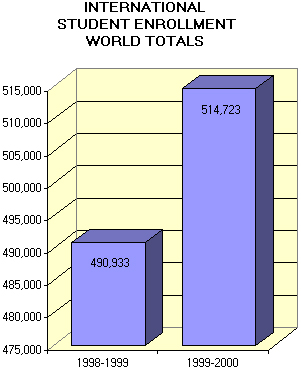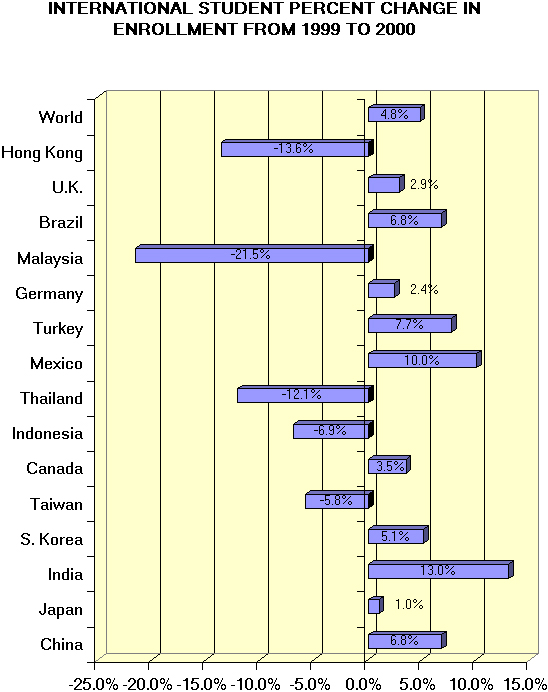Chile
A prolonged student strike at the Metropolitan University of Educational Sciences was partly responsible for the government’s recent decision to merge that school with the University of Chile, resulting in the resignation of Metropolitan’s rector. The Chilean education minister warned the students, who have been on strike since April, that unless they returned to classes, they would be moved to other universities.
— The Times Higher Education Supplement
Oct. 20, 2000
Guatemala
The University of the Valley of Guatemala, a privately funded institution based in Guatemala City, opened its Highlands campus on the grounds of a former military base in June. Registration for full-time students began in November.
Local leaders and academics decided the university should focus on three principal fields of study: agroforestry, ecotourism and education.
The Education Department will initially concentrate on training primary- and secondary-school teachers for the province. Jacquelyn Garcia, dean of education on the Highlands campus, said part of the university’s mission is to work toward improving the daily life of local residents.
In addition, the school will offer workshops in carpentry, metalworking and other vocational skills. These courses will be sponsored by the Technical Institute for Training and Productivity, an organization that receives support from several large Guatemalan corporations.
The Highland campus curriculum also plans to integrate distance-education programs from Mexico’s Monterrey Institute of Technology and Higher Education. A fiber-optic cable will be linked to the college to provide high-speed access to the Internet.
— The Chronicle of Higher Education
Oct. 20, 2000
Peru
A new bill recently passed in the Peruvian Congress officially ends eight years of direct government control of the country’s six state-run universities. The congressional vote was conducted after students organized protests against the “reorganization committees,” which had governed the country’s public institutions of higher education since 1992.
Before the committee mandates were created, the universities were accused of rampant corruption and of serving as breeding grounds for radical terrorists. As a result, President Alberto Fujimori dissolved Congress, suspended the judicial branch and ruled by decree that the universities would be taken over by the government.
— The Chronicle of Higher Education
Nov. 17, 2000
United States
Medical school applications have decreased by 20 percent in the last four years, according to the Association of American Medical Colleges. Health professionals attribute this decline to growing disillusionment with careers under managed medical care and to lucrative job opportunities in other fields.
The association recently reported that 37,137 candidates competed for 16,303 places in medical schools this year, down 3.6 percent from last year’s applications and far below the record 46,968 students who applied in 1996.
According to Dr. Jordan Cohen, association president, the decline is most likely the result of the strong economy, which has made high-paying jobs more available, without the costly and burdensome training required by medical school. Medical students face an average debt of $90,000 when they finish residency work.
— The New York Times
Oct. 27, 2000
Open Doors 2000 reports the number of international students attending institutions of higher learning in the United States increased by almost 5 percent to reach a total of 514,723 during the 1999-2000 academic year. This is the second-largest surge in international enrollment in the last 10 years and adds to the upswing that began two years ago, following a four-year period of minimal growth.
Dr. Allen Goodman, Institute of International Education president and chief executive officer, said that while the United States continues to be the most popular destination for those studying abroad, the percentage of international students here has declined from more than 40 percent in 1989-1990 to 30 percent today.
More than half of all international enrollments were from Asia (54 percent), while Europeans made up the second-largest regional group, with 15 percent of U.S. enrollments. There were substantial increases from China (6.8 percent) and also from India (13.0 percent). Canada came in sixth among leading countries, sending 23,000 students to the United States last year, while Mexico ranked ninth.
See the charts below for more information.
— www.opendoorsweb.org



